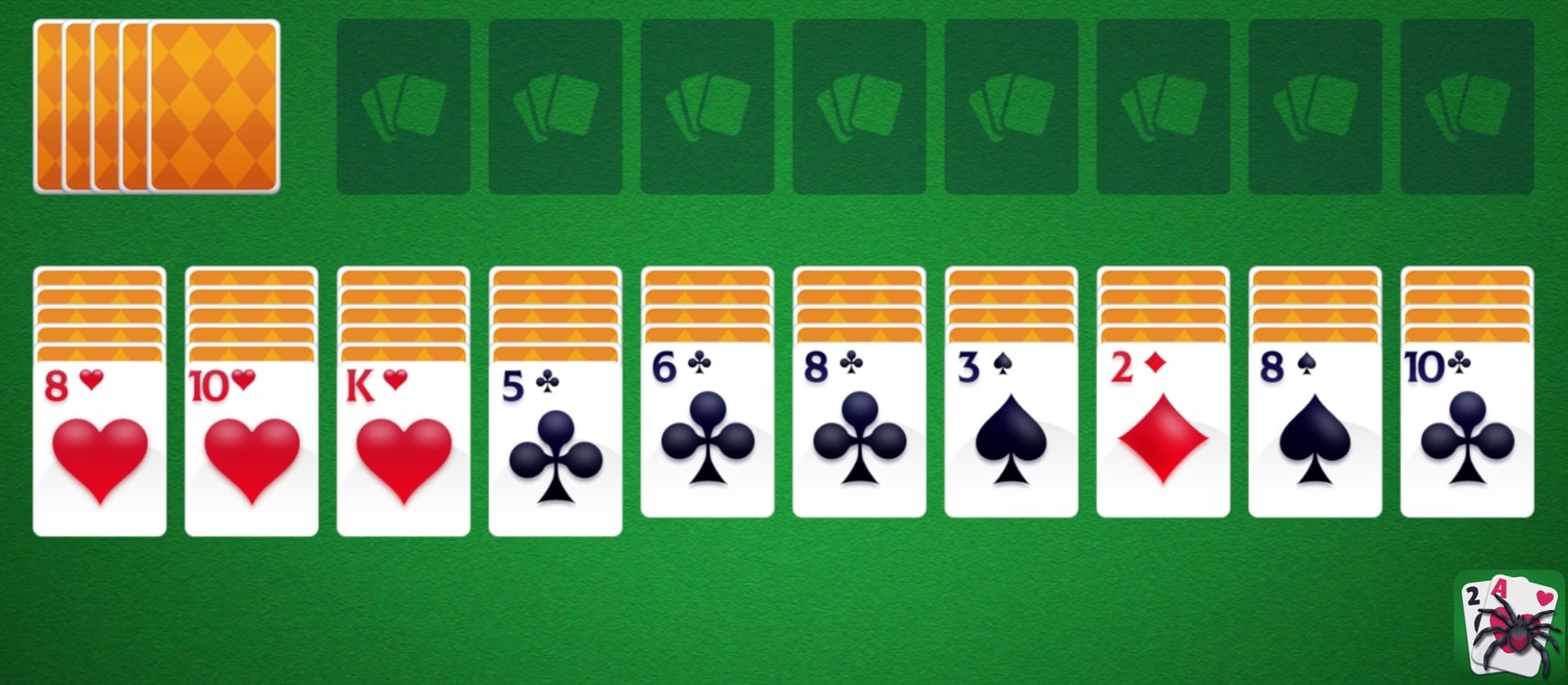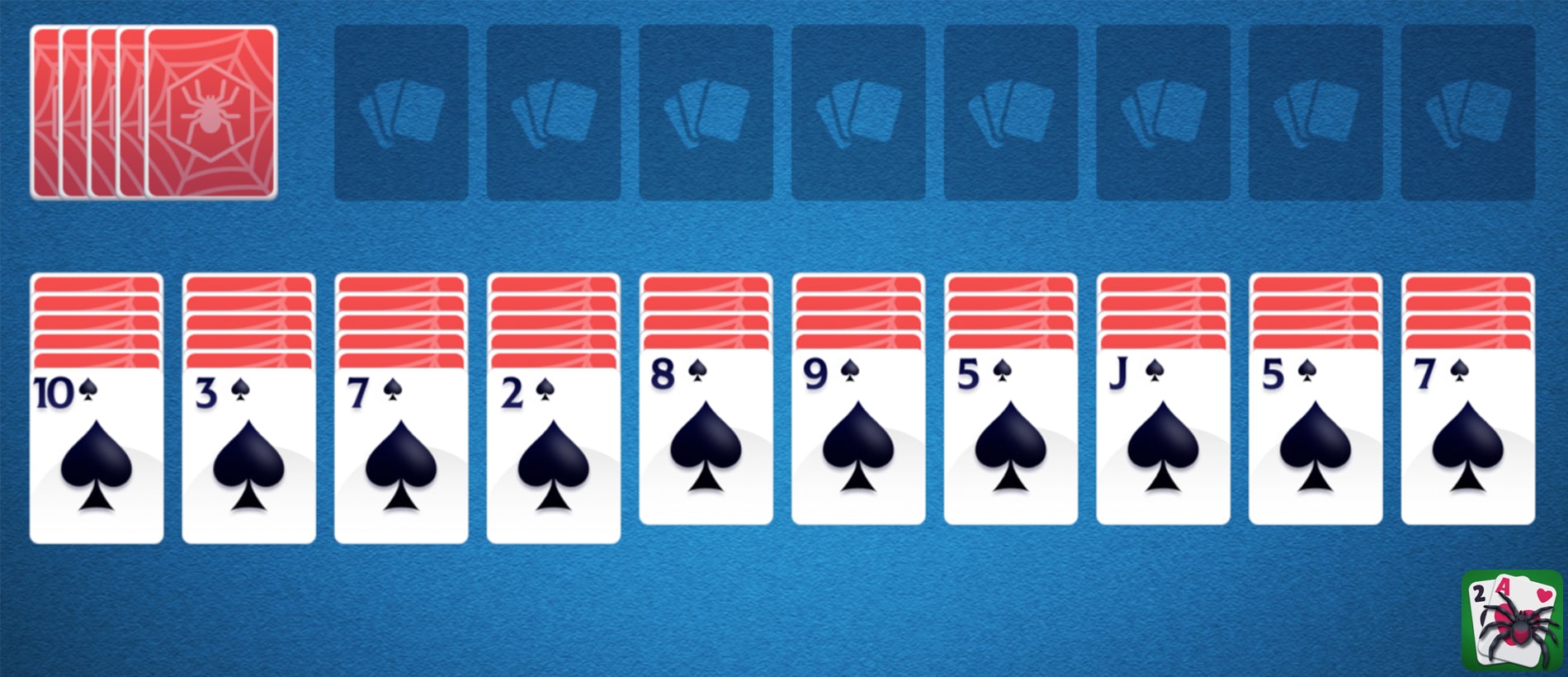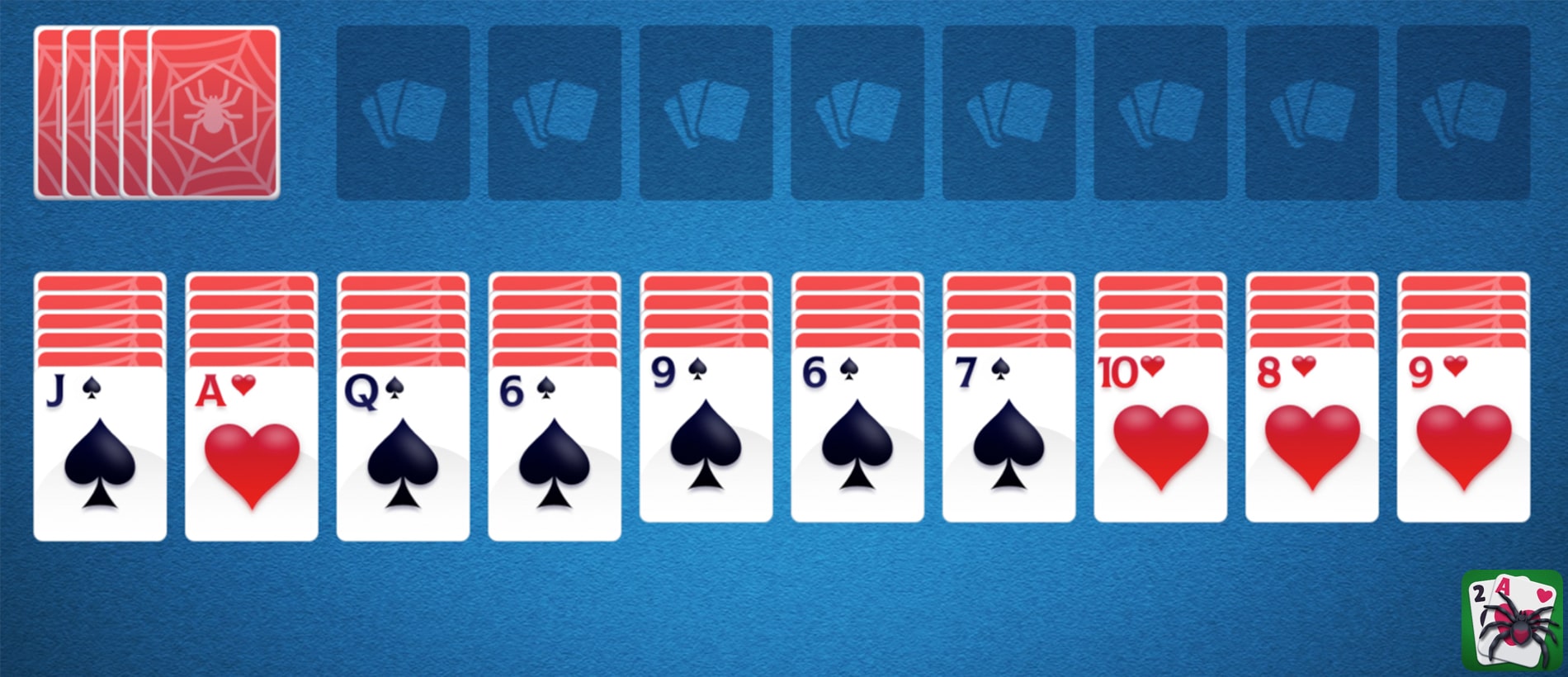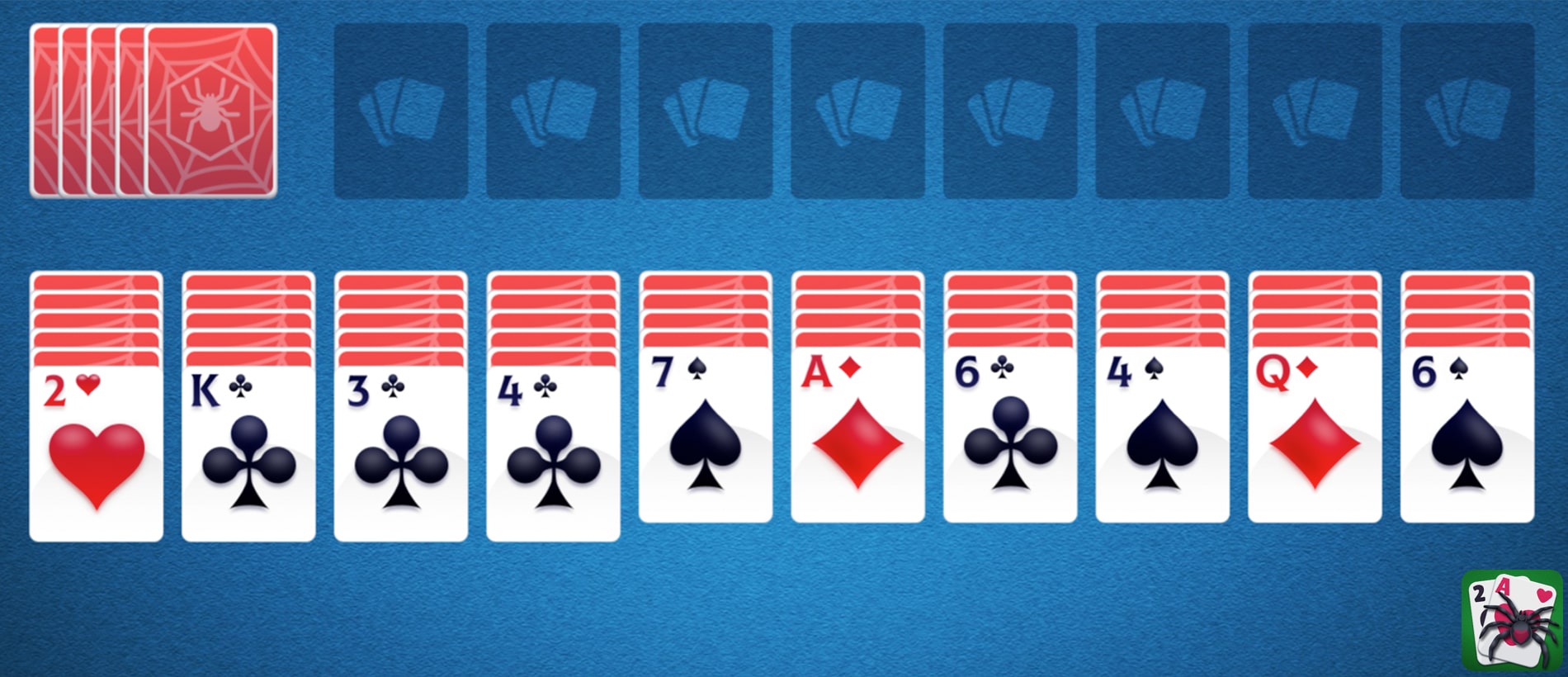What is the peculiarity of Spider Solitaire?
In contrast to solitaire alike games we all know, Spider Solitaire employs twice more decks of cards and columns amounting is 10. Solitaire online gained popularity as a game that demands both skill and endurance as it is a more complicated alternative to the standard solitaire layout. Nevertheless, these two games have the identical objective – to vacate the playing field and carry entire decks of playing cards, beginning with the king and then filled in descending order to the ace. There can be various forms of the spider game, with the difficulty level varying depending on how many cards suits the player operates. These determine whether the player must arrange the main sets by color (Spider 2 suits), suit (Spider 4 suits), or in numerical order.
Spider Solitaire process description
As we already know, the card amount, number of columns, and stack quantity used in Spider Solitaire differ from standard Solitaire online. A single 52-card deck is all that is needed to play classic solitaire, intending to spread the deck into four piles where suits are in ascending order. While in Spider Solitaire there are 10 columns and twice more cards are used as a rule. The columns are covered with cards face up, and 8 stacks of additional ones are in the bottom part of the screen.
Establishing the playing field
If you have decided to play Solitaire online, you must make some preparations. There is the same structure of Spider Solitaire as in the classic one: the playing field, the foundation, and the additional piles are the three primary playing locations. To start the game, you have to form 10 groups of four cards face down in each one. After that, for each of the initial four columns, you must add one more card. At the end of the preparations, you need to add faced-up cards on top of the ten closed piles. Leave some space in the upper right and left corners of the game board for an extra reserve stack and eight foundation stacks, respectively. The complete configuration should resemble this:

Taking action
The player can start moving when the layout is finished. Any playing card or numerical stack on the playing field may be transferred to any other card, provided that the value of the card or stack being added to is one less.
Any card can be pilled on any other and in any type provided by the game, and its value is one lower, but only a ready-made set of the same suit can be matched and completed.
The player of the free solitaire has the opportunity to hand out 10 additional cards turned upside down, one card in each column, once they have exhausted their options with the face-up cards. None of the columns should be empty before dealing.
Unlike traditional free solitaire, new piles do not need to start with a king; every card may be inserted into a blank column.
The stack consisting of all aces through kings of the same suit can be completed by a player, and then transferred to its place at the bottom. Solitaire online ends when the player runs out of moves and cards to deal with.
How to Play Solitaire. Rules
Although the goal of the game is straightforward, while you play solitaire you see that Spider rules make the game difficult. Similar to traditional Solitaire, in the play stacks, you can move a card to another card of any suit that is one rank higher than the card you are moving. A descending sequence of cards of the same suit can be moved from one playing pile to another. The primary rule variation in Spider Solitaire is the inability to build stacks within the fundamental piles. The Spider game goal is to lay out all the cards in the form of real families in descending order, starting with kings, in any of the playing piles. After building such a “family”, it will be removed from the playing field to the upper right corner of the game field. Depending on the type of game being played, there are several rules:
One-suit
The easiest version of the Spider game is ideal for novices. Move any faced-up card to a card similar in value, regardless of suit, if such a card is in the spread. For example, while you play solitaire – you can put a queen of any suit on a king of any suit – a 7 of any suit can be put on an 8 of any suit. You can move the card closest to you from any pile at your discretion. Multiple cards can be transferred at the same time only if they are on top of each other in descending order. The game ends after all 8 sets are collected.

Two-suit
The Spider Solitaire 2 suit is the best to play for intermediate gamers. The format of the game is the same — the exact number of cards, and the same number of piles. Again, the only difference is how to move the cards (sequences), not how to stack them. So be careful when you put a red card on top of a black one – you will temporarily be unable to reach that black card! And you still have to reveal the closed card, and you still have to fill all stacks before using the deck.

Four-suit
The Spider Solitaire 4 suits are the type of this game, where you will see all suits as they are: diamonds are diamonds, spades are spades, etc. You can make any sequences (6-7-8-9, etc.), but you can only move sequences of the same suit. Only whole, single-suit stacks, though, can be transferred to the foundation pile. As a result, the complexity of the game is increased since there are fewer possibilities to move cards of the same suit across the tableau due to the increased number of suits. See how this becomes practically impossible? When you're flipping cards, you need to know which moves to make and which to avoid. So be careful while you play the Spider Solitaire 4 suits – it is easy to come to a dead end.

Strategy: play Spider Game successfully
The Spider Solitaire 2 suits and Spider Solitaire 4 suits are not the only option when strategy (not counting luck) will help you first of all. To build sequences and remove them from the schedule (to win), you need to be very careful. The variety and the manner the cards are dealt while playing solitaire online will both affect a player's chances of winning. Choose one-suit free solitaire – it offers the greatest chance of success, followed by still playable but much more difficult Spider Solitaire 2 suits and 4 suits. There are, however, some bargains that cannot be won in any game variant, regardless of the choices chosen. The more suits being played, the greater the chance of encountering an unwinnable hand. There are various techniques to improve a player's odds of winning, regardless of the game style. These consist of:
Quickly reveal any face-down cards.
In free solitaire only face-up cards are movable. Thus it's critical to "reveal" these right away. When you play spider solitaire this way – the possibility of completing entire stacks and shifting them to the foundation pile increases with the number of face-up cards accessible to the player. Additionally, doing so raises a player's chances of emptying a tableau pile, which is beneficial for subsequent card reordering.
All options must be considered before dealing
The player should be certain they have used every move available on the existing tableau before taking new cards. A new card could obscure a potential action when the player hasn't checked carefully all the possibilities before dealing which makes it more challenging to finish stacks.
Don’t forget about blank places
Play solitaire where not simply a king can take a place in a blank space on the playing field. Players of Spider Solitaire can therefore employ empty tableau piles to shuffle or stack any card necessarily to reveal a more advantageous card. Consider these additional suggestions for Spider Solitaire 2 suits and Spider Solitaire 4 suits:
Suit yourself
Try to make sequences of cards of the same suit. Throughout the free solitaire game, you'll be glad you did that. A beneficial card can be "trapped" such that it cannot be moved or accessed if cards are moved according to number rather than a suit.
Continue arranging
Cards that are left on the playing field will let the player see where they may use the extra space. This can entail shifting smaller stacks into the empty pile to reveal "trapped" cards underneath.